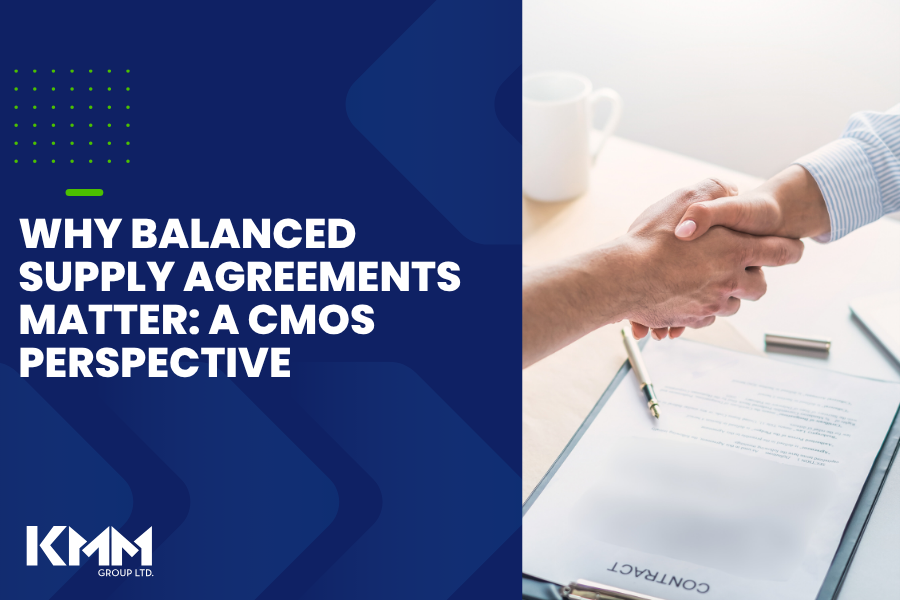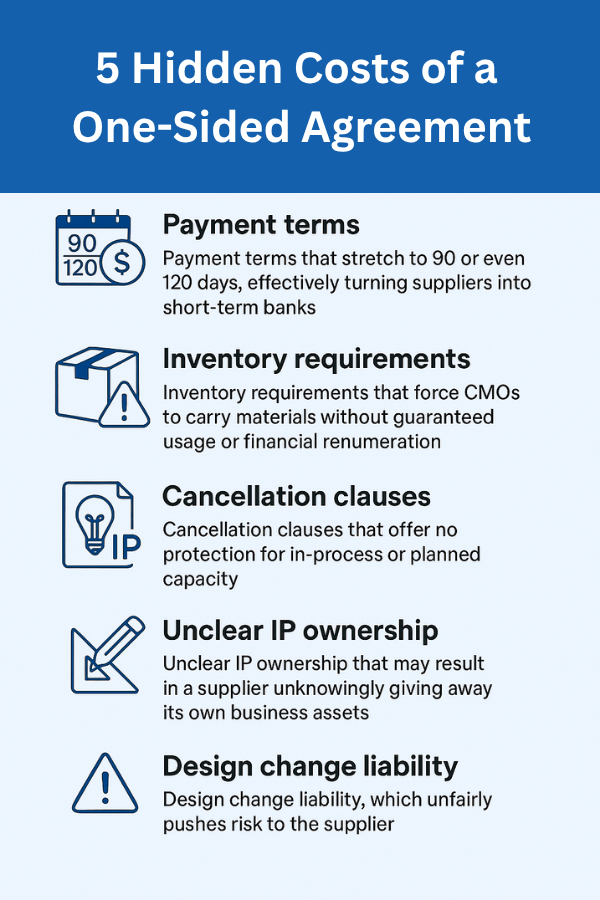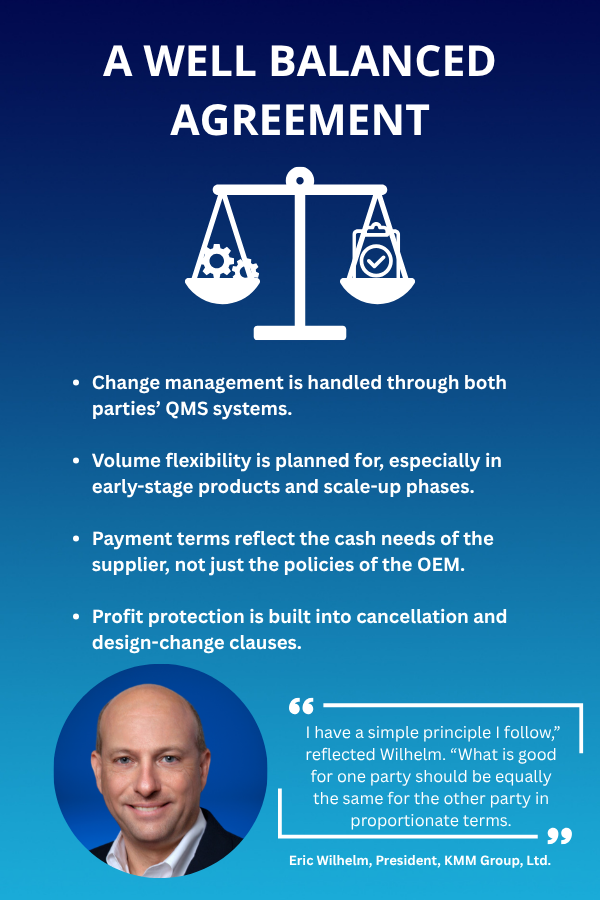
Great Agreements Start with Mutual Respect
On the surface, a Long-Term Agreement (LTA) between a contract manufacturer and an OEM is just a legal document. But beneath the language, it reflects something much deeper, the actual state of the relationship.
When a supply agreement is written with mutual respect, it sets the tone for innovation, agility, and long-term partnership. When it’s written to control, it quietly undermines trust before the first part ever ships.
KMM Group’s CEO John Shegda and President Eric Wilhelm have seen firsthand how a supply agreement can set a project up for mutual success or quietly erode a good working relationship. In this article, they offer an inside look at how LTAs can foster stronger outcomes when built on collaboration rather than control.
“A supply agreement is the physical manifestation of the relationship between a client and a vendor,” Shegda noted. “Like every other relationship in your life, this one needs to be rooted in communication and respect.”
Shared Risk. Shared Success

Too often, particularly among large OEMs, there’s an assumption that the vendor should be grateful for the business. This belief manifests in one-sided LTAs that dictate terms without room for negotiation. Though this document must outline and prescribe the responsibilities of each party for situations that neither hope will ever come to fruition, it needs to be fair and equitably distribute the legalities and risks so that the weight is borne by both.
“Often, the OEM feels they can dictate egregiously slanted terms and expect that they should be accepted without question,” said Shegda.
“The reality is that smaller vendors have resources available to them,” explained Wilhelm. “Reach out to your local trade association, such as the NTMA or PMA, a trusted advisor, or a corporate attorney.”
If a “worst-case” scenario occurs, and some of the terms of the supply agreement need to be invoked, both parties should feel like they’re working together and supporting one another to overcome the obstacle. If one or the other feels that they have been short-changed, or overly burdened by the situation, it will only lead to the eventual demise of the business relationship.

The most dangerous clauses aren’t always the obvious ones. It’s often the fine print that erodes profitability over time.
As Wilhelm pointed out, “Everyone has a party to answer to. A boss, corporate executives, shareholders or a customer, or a market requirement to be successful. Your ability to negotiate terms on your behalf will come from how much your customer needs you. What is your most valuable competency? Ultimately, you may have more leverage than you may think.”
If an agreement doesn’t allow a manufacturer to cover costs, secure margins, and protect intellectual property, then it isn’t sustainable.
Clarity, Not Complexity, Builds Trust
Some of the most effective LTAs aren’t lengthy or packed with legal jargon. In fact, the best example a close business associate of Shegda ever encountered came from a multibillion-dollar confectionary company. It was just two pages long.
An LTA that is simple and in layman’s terms as much as it can be and appropriate to the audience for the agreement is a sure sign that it’s written with partnership in mind. Though some would say that this is a sign of naivete, it can also be maturity.
The French mathematician Blaise Pascal once said, “I have only made this letter longer because I have not had the time to make it shorter.” The same applies to contracts. Clarity is harder to write, but easier to live by.
“The laws of the US or the State of prevailing jurisdiction of an LTA may protect you more than you know, when an agreement is written with simplicity,” said Wilhelm.

Recognizing a Partnership-Driven Supply Agreement

The length and language of a contract say a lot. When an agreement is written in plain English, tailored to its audience, and focused on shared outcomes, it sends a clear message: this is a partnership, not a power play.
When a contract includes guarantees that reflect real-world conversations, such as agreed-upon volumes, pricing structures, and timelines, it provides stability. When it lacks those things, or hides them behind vague or predatory clauses, the foundation is shaky from the start.
As Shegda pointed out, “Who are you going to give priority treatment to, or do favors for? The friend who leaves you hanging or the one that supports you?”
A Simple Rule for Resilient Supply Chains
If OEMs want to build more resilient, innovative supply chains, the advice is straightforward: keep it simple and keep it fair. That doesn’t mean sacrificing performance, it means enabling it.
Because the right agreement doesn’t just protect the business. It earns loyalty, accelerates outcomes, and creates room for both parties to thrive.
Download our free checklist, What to Watch for in a Supply Agreement, and make sure your next contract sets the stage for long-term success.